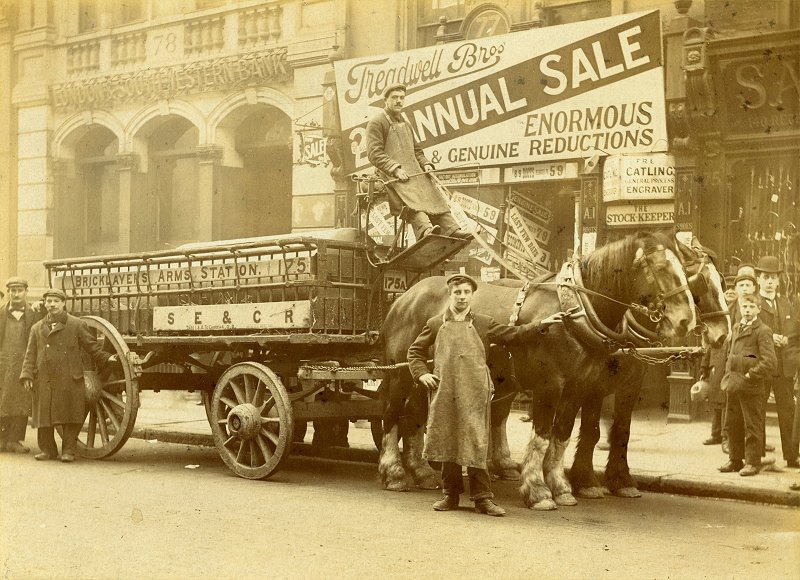On my father's side, I know very little about my great grandfather's time as a railwayman in the north-west. A little bit of
'Who do you think they are?' family history activity has helped and this one photograph I have of Henry Lover, the driver, that has been passed down the generations
in the family, gives a little bit of information, but I feel a few days at the National Archive in Kew are required to find out more
about his time on the rails.
I have no date for the photograph, but know he had become an driver before 1894 and have learnt the following about the
picture:
The reason for the early date is that the engine still has wooden brake blocks. I understand that nearly all these had been replaced
by iron before the Great War. It was used for shunting carriage stock as it is vacuum fitted and painted in lined livery.
Other information received since this page was first uploaded in January 2007:
If you can shed any more light on the locomotive or have any photographs of Birkenhead Woodside or Edge Hill sidings,
I would be very grateful to receive an e-mail via the link on the hompage.
Many thanks.
The photo shows a horse-drawn cart from the Bricklayers Arms Depot delivering goods
in Fleet Street in the City of London. The Bricklayers Arms was the depot of the South
East & Chatham Railway located at the north end of the Old Kent Road, serving south east
London, Kent and part of what is now East Sussex. In 1907 road transport was still
predominantly horse-drawn and motor vehicles were much in the minority.
The buildings behind the cart are numbers 81, 80, 79 and 78 Fleet Street. No. 81 on the
left is a branch of the London and South West Bank, on the corner with Salisbury Court.
This bank was taken over by Barclays in 1920 and there is still (in 2009) a branch of
Barclays at 81 Fleet Street. The addresses of these buildings match the entries in
Kelly’s London Directory of 1908.
The driver of this cart, perched high up and with moustache and flat cap, is my great grandfather, Tom Young
(1877-1960). In 1907 he was 30 years old and living at No.1
Burgundy Street, Humphrey Street, off the Old Kent Road, with his wife, Clara, and four
daughters, Clara, Annie & Bessie (twins) and Rosina. His whole working life, from the
1890s to the 1940s, was spent with the South Eastern & Chatham Railway and its successor, the Southern
Railway.

The location seems to be Birkenhead Woodside shed and the date probably early in 1906 and almost certainly before around
1912-1914. The engine was built as the thirteenth of the final batch of twenty 'Coal Engines' all dated October 1892. Its
Crewe Motion Number was 3335. It was rebuilt as a 'Box Tank' in December 1905, renumbered into the Duplicate List in August
or November 1920 as No.3685, becoming LMS No.7498 - applied in June 1928. It was withdrawn in November 1930.
The loco is a "Coal Saddle Tank" commonly referred to as a "Box Tank".
There were 45 of these which were rebuilds of 17 inch Coal Engines - 0-6-0 tender engines.
Rebuilding was during 1904-5 (to 1906 in one book) so the picture cannot be earlier than 1904.
All 45 engines survived into LMS days.
The photo may have been taken in Edge Hill "Grid Iron" sidings.
It could be in the docks in either Liverpool or Birkenhead but the engine has a fairly long wheelbase
and is not really a suitable type for dock work where curves were often very sharp.
My great grandfather my mother's side is pictured in the following
1907 photograph of a railway delivery cart or wagon in Fleet Street, London.
